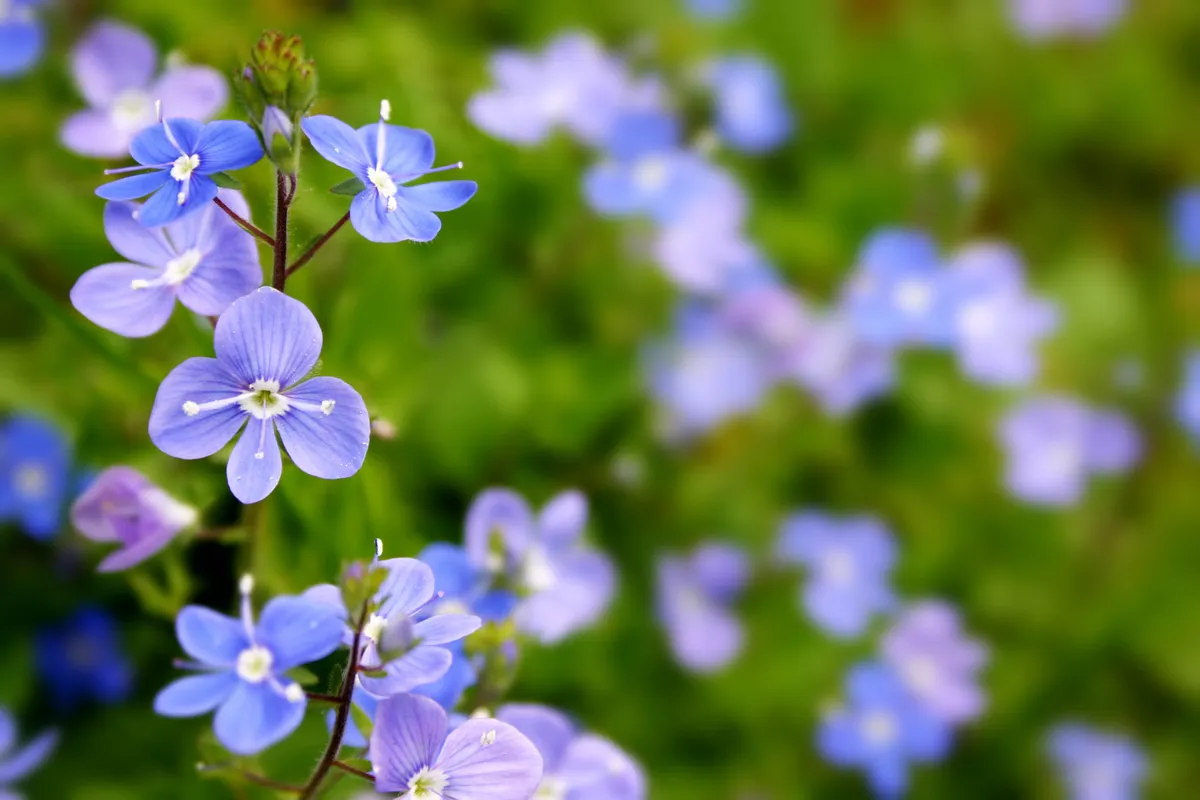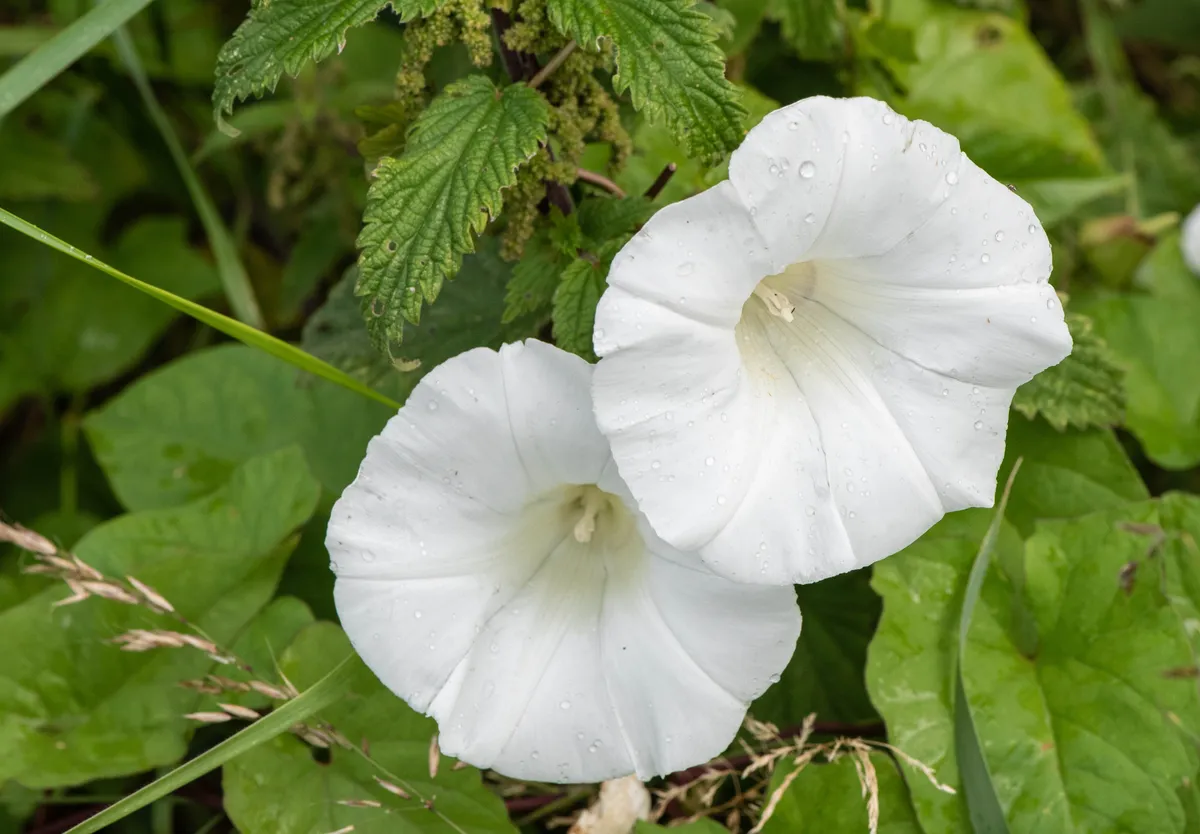After seeing weeds on Main Avenue at last year’s RHS Chelsea Flower Show and as No Mow May approaches. Many of us have taken the opportunity to revel in the garden delights that appear with such dishevelment – the bird’s eye, the lady’s smock, the thyme-leaved speedwell – and we’ve been seduced by the licence given to dandelions and nettles to flaunt their wares at the grandest of horticultural events. There’s an unmistakable whiff of rewilding on the air – at least where gardens are being talked about.
Why did we get such a downer on weeds?
Where gardens are being gardened – well, that’s a different matter, and it remains to be seen how far we’re prepared to embrace a looser look, coupled with a more sustainable and wildlife-friendly approach to the land over which we hold stewardship. The question remains: when and why did we get such a downer on weeds, and how did that come about? How did it arise for me, and for you?

I don’t remember being sat down and lectured upon weed identification, but I’m fairly sure by the age of five most of us are able to point out the apparently undesirable frequenters of our flowerbeds. We know them by their blooms (often yellow – is this why so many of us steer clear of that colour in the garden?), their seedheads, their twining tendrils and their cheerful ubiquity. We know them by their ability to survive just about anywhere and, for some reason, we’ve been taught to despise them for just this distinction, rooting them out or poisoning them at every opportunity.
We pass on the impulse to control from one generation to another
Without taking proper time to interrogate it, we pass on the impulse to control from one generation to another; a desire to manage nature and put her back in her box that sees its outworking in the way we unconsciously approach our gardens. We play out a perpetual balancing act between those energies that seek to make a mark upon the land and those that celebrate the fecund potential of the natural world to grow, and to keep on growing, against apparently insurmountable odds. We’ll suffer this latter power to the point at which it gives us fresh, young growth and bright, bold flowers, but the old, the leggy, the generally-past-its-best, will be removed in short measure.
It seems we have little love for a plant once the biological function of producing the next generation has been performed
And maybe there’s nothing wrong in that – gardens are where we get to play at being in charge. But do you ever get the feeling we’re making a lot of unnecessary work for ourselves? We spend time, money and energy pulling out those plants perfectly adapted to grow well in our soil, to replace them with expensive introductions that need coddling if they’re not to expire a fortnight after planting. We eschew the bindweed, linaria and wood avens our gardens want to grow while embracing the weeds of other soils – echinacea, melianthus, amelanchier – with rapture.

Yet there’s something amiss in our thinking. In Weeds, the Story of Outlaw Plants, Richard Mabey points out that we have become confused in our appropriation of the adjective ‘weedy’ as a description for the thin, straggly and unwell. What we’re really often looking at when we see a weed is a a plant that’s good at going to seed, often several times a season, with all the bodily implications that pregnancy and birth will have on an organism’s resources. Wildflowers are fantastically well adapted to multiplication, but it seems we have little love for a plant once the biological function of producing the next generation has been performed. Over the next few months, we’ll spend hours in our gardens busily snipping off any flower past its prime, frantically deadheading to prolong the display and prevent our plants from having to suffer the indignities of maturity. But the weeds, where they grow, will go about their business unmolested.
It’s human activity that provides the precise concoction of nutrients and disturbed soil that these plants find so hospitable to their individual needs
Among all this, what we’re missing out on is that weeds like our company. It’s human activity that provides the precise concoction of nutrients and disturbed soil that these plants find so hospitable to their individual needs – they seek us out, only to receive a cold shoulder. In our urgency to maintain order, is there a chance that we’re denying ourselves a deeper relationship with the natural world on our doorstep? If we’re to pursue this possibility, the extent to which we’re willing to 'let it go and let it grow' will vary from person to person, and from gardener to gardener. But maybe we owe it both to ourselves and to our gardens to explore how much further we might be willing to relinquish control, if only to come to a happier accommodation with the plants our soil wants to grow.
Andrew Timothy O’Brien is a garden coach, podcaster and author of To Stand and Stare: How to Garden While Doing Next to Nothing.